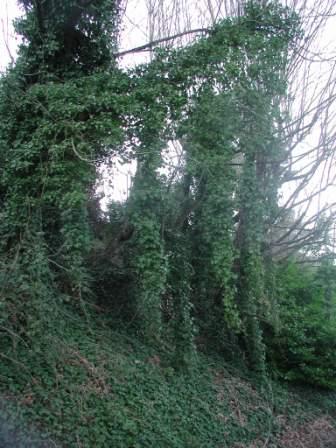
In yesterday’s post I linked to a letter in Nature by Mark Davis and a number of other ecologists on the role and native and alien plants. Unfortunately the journal requires a subscription. Copyright laws prevent me from re-printing the entire article, however, below is an excerpt from the conclusion, which I think captures most of their message.
“Most human and natural communities now consist both of long-term residents and of new arrivals, and ecosystems are emerging that never existed before. It is impractical to try to restore ecosystems to some ‘rightful’ historical state. For example, of the 30 planned plant eradication efforts undertaken in the Galapagos Islands since 1996, only 4 have been successful. We must embrace the fact of ‘novel ecosystems’ and incorporate many alien species into management plans, rather than try to achieve the often impossible goal of eradicating them or drastically reducing their abundance. Indeed, many of the species that people think of as native are actually alien. For instance, in the United States, the ring-necked pheasant, the state bird of South Dakota, is not native to the great plains of North America but was introduced from Asia as a game bird in the latter half of the nineteenth century.
“Specifically, policy and management decisions must take into account the positive effects of many invaders. During the 1990s, the US Department of Agriculture (USDA) declared several species of introduced honeysuckles to be alien (harmful), and banned their sale in more than 25 states. Ironically, from the 1960s to the 1980s, the USDA had introduced many of these same species in land reclamation projects, and to improve bird habitats. Recent data suggest that the agency’s initial instincts may have been appropriate. In Pennsylvania, more non-native honeysuckles mean more native bird species. Also the seed dispersal of native berry-producing plants is higher in places where non-native honeysuckles are most abundant (Gleditsch, J. M. & Carlo, T. J. Diversity Distrib. 17, 244-253 (2010).
“Clearly, natural-resource agencies and organizations should base their management plans on sound empirical evidence and not on unfounded claims of harm caused by non-natives. Another valuable step would be for scientists and professionals in conservation to convey to the public that many alien species are useful.
“We are not suggesting that conservationists abandon their efforts to mitigate serious problems caused by some introduced species, or that governments should stop trying to prevent potentially harmful species from entering their countries. But we urge conservationists and land managers to organize priorities around whether species are producing benefits or harm to biodiversity, human health, ecological services and economies. Nearly two centuries on from the introduction of the concept of nativeness, it is time for conservationists to focus much more on the functions of species, and much less on where they originated.”






